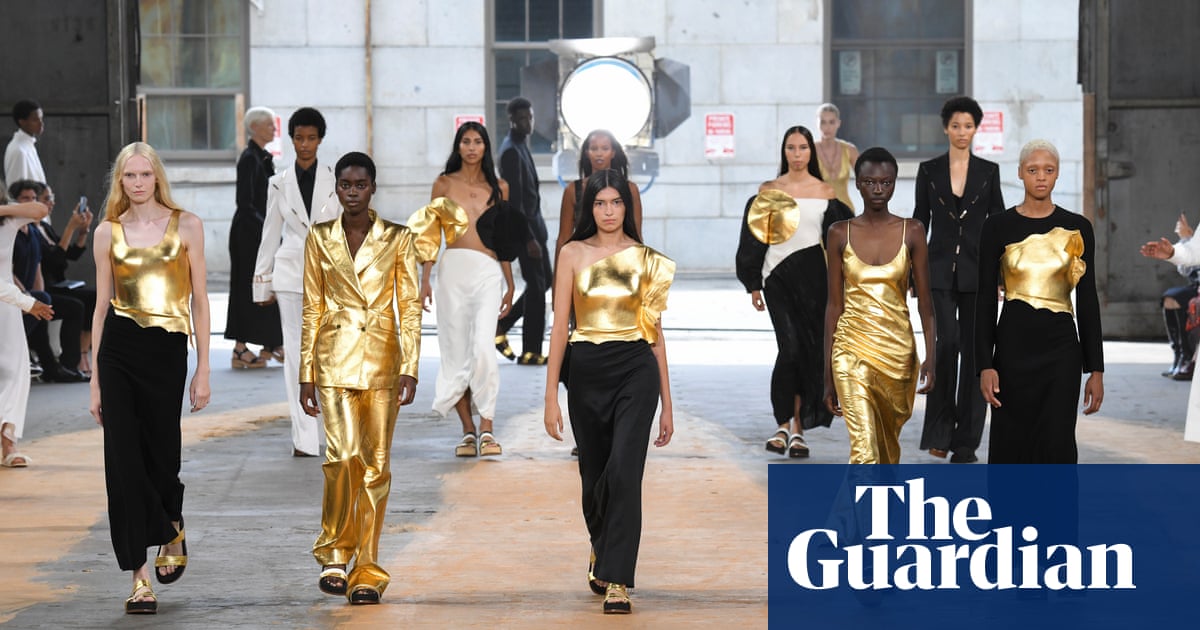‘Surprisingly sustainable’: fashion meets eco meets politics at New York fashion week - 4 minutes read

Three months after the US supreme court’s decision to reverse Roe v Wade, removing the constitutional right to a legal abortion that held for nearly half a century, the New York designer Gabriela Hearst took to New York fashion week to “statement-cast” Cecile Richards, a former president of Planned Parenthood, on her spring catwalk.
This fashion week is the first since the June decision, and on Tuesday afternoon, wearing a black double-breasted coat with rose gold bars flecked along the lapel, the women’s rights activist was among 50-strong “goddesses and warriors”, who included teenage climate campaigner Xiye Bastida and amputee model and activist Lauren Wasser.
The show was not explicitly skewed towards women’s reproductive rights, rather, it focused on those who were overlooked, inspired by ancient Greek poet Sappho – often considered the female Homer – only discovered by Hearst after her daughter decided to dress like her for Halloween. “It makes me question if I would have heard of her had she been born a man,” she said before the show.
The Uruguayan-born designer launched her womenswear label in 2015 with the sole aim of making clothes that women can actually wear, albeit for a three- or four-figure price tag. Despite showing both women’s and men’s fashion on Tuesday, the modest number of actual men actually on the catwalk – there were a few, though they largely appeared as accessories to the women, and were dressed in complementary colour suits – was an attempt to put women front and centre of the show.
Featuring leather and nappa (faux leather) dresses with gold breastplates, floor-length merino dresses knitted like cobwebs, poppy-coloured suits and fisherma-stylen sandals, the collection sat somewhere between ancient and modern Greece except inside a warm, corrugated-metal fish hangar in Brooklyn, normally a transit point for 10m pounds of fish a year and which once hosted a Democratic debate between Hillary Clinton and Bernie Sanders. The Resistance Revival Chorus, a collective of women and non-binary singers, soundtracked the show, suitably dressed in white floor-length gowns.
Hearst, who lives in New York and also oversees Chloé, made a quiet arrival in fashion at a time when women designing for women was a rarity. Known for since snagging two of the most visible women in US politics – Jill Biden, who wore two versions of the same embroidered dress on the night of the inauguration and first address to Congress, and Alexandria Ocasio-Cortez, who wore a teal suit for a fashion shoot for Interview magazine – Hearst is also wellknown for her sustainable manufacturing practices.
In this spring collection, one-third of the collection was made from deadstock fabrics, and the shoe soles were largely biodegradable. Even the glue that held together the gold-foil knitted dresses was eco certified – never mind that the warehouse was packed to the rafters with international press and buyers.
Elsewhere at this surprisingly sustainable NYFW, circularity muscled its way on to the catwalk at Coach, where under British designer Stuart Vevers, leather footballs and old leather jackets were reworked into jumpsuits, coats and bags.
Vevers’s collection was an homage to his love of American neo-noir cinema. Set on a rickety New York pier, and referencing everything from Paris is Burning to “Joey Ramone at Rockaway Beach and Patti Smith at Coney Island, it was all about modern proportions and bare legs. Seven oversized leather jackets in chocolate brown, a pair of trousers and a beautiful patchwork coat were followed by a handful of paint-spattered knits and finally various short babydoll dresses in pastel and gingham. Shoes were hi-tops or jelly sandals in bright colours – very 80s, very distressed Dorothy in Oz.
In both cases these were clothes that looked to the future while working with the fabrics – and a mood – set firmly in the past.
Source: The Guardian
Powered by NewsAPI.org